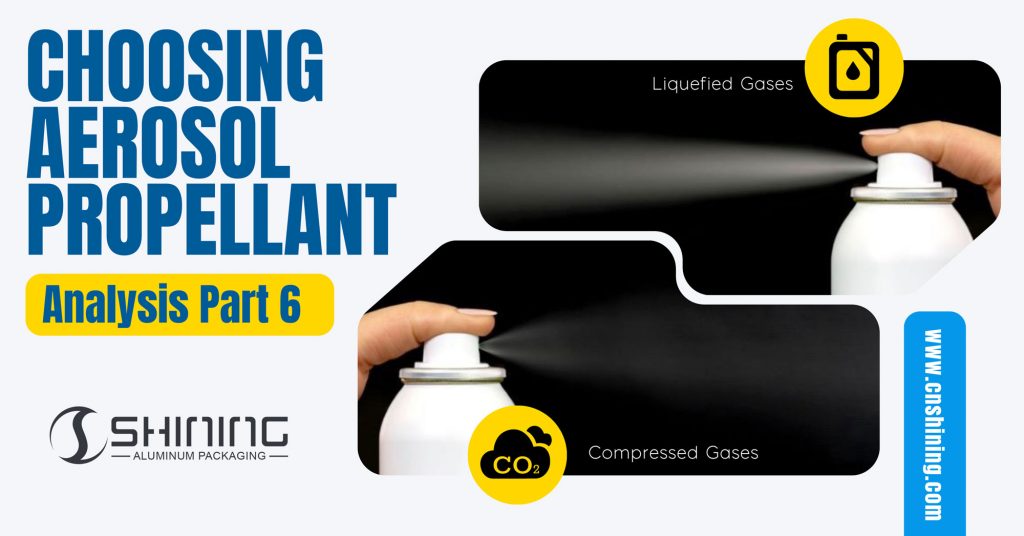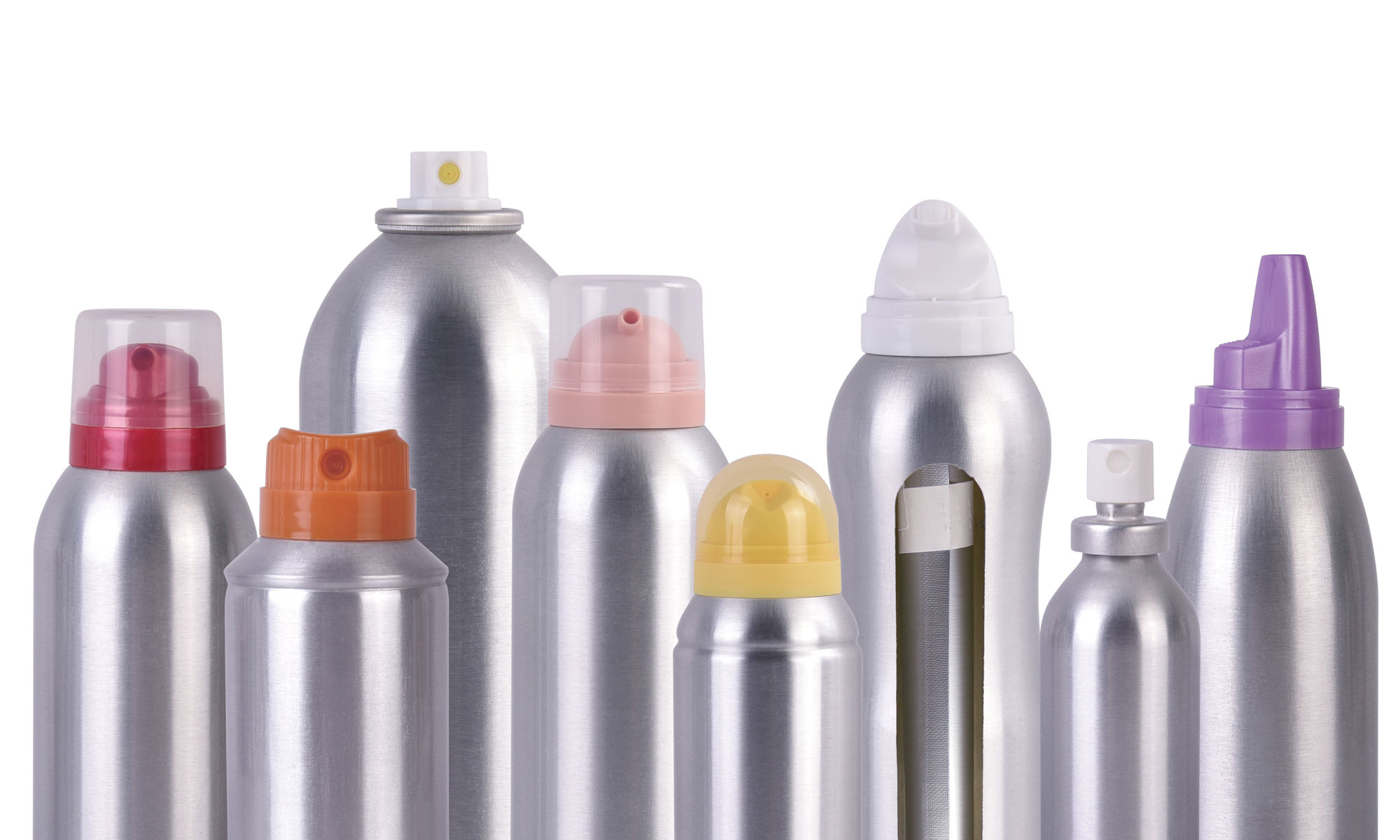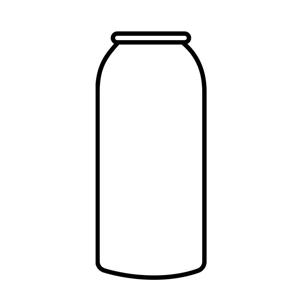مقدمة
تلعب الدوافع دورًا حاسمًا في وظائف وكفاءة صمامات الهباء الجوي، مما يضمن تدفقًا ثابتًا للمنتج وأنماط رش محكومة وأداءً موثوقًا به بمرور الوقت. يعد اختيار النوع المناسب من الوقود أمرًا ضروريًا ليس فقط لتحقيق نتائج المنتج المرجوة ولكن أيضًا للحفاظ على معايير السلامة وتقليل التأثير البيئي. في هذه المقالة، نتعمق في الأنواع الرئيسية للوقود المستخدمة في صمامات الهباء الجوي وعوامل الاختيار والنصائح التي يجب على الشركات المصنعة مراعاتها للحصول على نتائج مثالية.
نظرة عامة على أنواع الوقود: الغازات المسالة والغازات المضغوطة
في عالم صمامات الهباء الجويتنقسم الدوافع عمومًا إلى فئتين: الغازات المسالة والغازات المضغوطة. ويختلف هذان النوعان من حيث الضغط والاتساق والاعتبارات البيئية.
1. الغازات المسالة
تُستخدم الغازات المسالة على نطاق واسع كوقود نظرًا لقدرتها على الحفاظ على ضغط ثابت داخل الحاوية. ومن الأمثلة الشائعة الهيدروكربونات مثل البروبان والبوتان والأيزوبيوتان. عندما تكون تحت الضغط، تظل هذه الغازات في حالة سائلة ولكنها تتحول بسرعة إلى غاز عند إطلاقها من خلال صمام الهباء الجوي، مما يوفر رذاذًا ثابتًا. ونظرًا لاتساق ضغطها، غالبًا ما تُفضل الغازات المسالة في التطبيقات حيث يكون نمط الرش الموحد ضروريًا، مثل منتجات العناية الشخصية.
2. الغازات المضغوطة
الغازات المضغوطة، بما في ذلك ثاني أكسيد الكربون (CO2)2)، النيتروجين (ن2)، وأكسيد النيتروز (N2تعمل الدوافع المضغوطة عن طريق احتلال مساحة رأس الحاوية فقط، مما يعني أنها تطبق الضغط من الطور الغازي فقط. وعلى عكس الغازات المسالة، تفقد هذه الدوافع الضغط مع استخدام المنتج، مما قد يؤدي إلى رش غير متناسق في نهاية استخدام العلبة. تُفضل الغازات المضغوطة للمنتجات التي لا تتطلب نمط رش ثابت أو للتركيبات الحساسة للهيدروكربونات.
اختيار الوقود: المعايير الأساسية للأداء والسلامة والتأثير البيئي
يتطلب اختيار نوع الوقود المناسب تحقيق التوازن بين الأداء والسلامة والتأثير البيئي. قد يكون لكل تطبيق متطلبات فريدة، ولكن هناك إرشادات عامة يجب اتباعها.
اعتبارات الأداء
يجب أن يكون الدافع متوافقًا مع التركيبة ونظام الصمام لضمان رش فعال. على سبيل المثال، غالبًا ما تكون الغازات المسالة أكثر فعالية مع المنتجات التي تتطلب رشًا مستمرًا، في حين قد تكون الغازات المضغوطة أفضل للمنتجات المستخدمة في الرشقات.
معايير السلامة
إن ضمان السلامة أمر بالغ الأهمية، وخاصة في المنتجات الاستهلاكية ذات الحجم الكبير. ويجب تخزين الغازات المسالة القابلة للاشتعال مثل البروبان والبوتان بحذر، وغالبًا ما تتطلب وضع علامات خاصة عليها ومعالجتها. ومن ناحية أخرى، توفر الغازات المضغوطة غير القابلة للاشتعال مثل النيتروجين خيارًا أكثر أمانًا للمنتجات المستخدمة في البيئات الحساسة.
المخاوف البيئية والتنظيمية
في السنوات الأخيرة، تحولت صناعة الهباء الجوي نحو خيارات صديقة للبيئة. تساهم الغازات المسالة القائمة على الهيدروكربون في المركبات العضوية المتطايرة (VOCs)، والتي يتم تنظيمها في العديد من المناطق. الغازات المضغوطة مثل النيتروجين وأول أكسيد الكربون2وتوفر ثنائيات أكسيد النيتروجين وأكسيد النيتروز بدائل ذات تأثيرات بيئية أقل، مما يجعلها مثالية للمنتجات الصديقة للبيئة.
تقليل التأثير البيئي باستخدام خيارات الوقود المستدام
بالنسبة للشركات المصنعة التي تركز على الاستدامة، فإن تقليل انبعاثات المركبات العضوية المتطايرة يشكل مصدر قلق أساسي. وفيما يلي بعض الاستراتيجيات لاستخدام الوقود الأكثر استدامة:
- الهواء المضغوط: يعد الهواء المضغوط خيارًا صديقًا للبيئة، حيث يوفر وقودًا غير قابل للاشتعال وآمنًا ولا يساهم في إنتاج المركبات العضوية المتطايرة.
- أول أكسيد الكربون2 وأكسيد النيتروز: كلا من CO2 و ن2إن التأثيرات البيئية لهذه المركبات منخفضة. ومع ذلك، فمن الضروري مراقبة تفاعلها مع تركيبة المنتج، حيث أن ثاني أكسيد الكربون2 قد يؤدي إلى تغيير النكهة أو التسبب في الرغوة في بعض المنتجات.
- مزيج من الغازات المضغوطة والمسالة: يمكن للمصنعين الجمع بين فوائد كلا النوعين من الوقود لتحقيق خصائص أداء محددة مع تقليل انبعاثات المركبات العضوية المتطايرة.
نصائح عملية للمصنعين
عند تقييم خيارات الوقود، ضع النصائح التالية في الاعتبار لضمان الأداء الأمثل وسلامة المنتج:
- إجراء اختبارات توافقية صارمة: تأكد من أن الوقود المختار لا يتفاعل سلبًا مع التركيبة أو مكونات الصمام.
- تقييم متطلبات الضغط: قد يكون لكل منتج رذاذ احتياجات ضغط فريدة بناءً على تطبيقه، لذا قم بتخصيص اختيار الدافع وفقًا لذلك.
- مراعاة اللوائح الجغرافية: تختلف لوائح الوقود الدافع على مستوى العالم. على سبيل المثال، تفرض بعض المناطق قيودًا على انبعاثات المركبات العضوية المتطايرة، مما قد يؤثر على اختيار الوقود الدافع.
10 أسئلة شائعة حول وقود صمام الهباء الجوي
- ما هو الفرق بين الغاز المسال والغاز المضغوط كوقود؟ توفر الغازات المسالة رذاذًا ثابتًا وتحافظ على الضغط، بينما توفر الغازات المضغوطة رذاذًا متقطعًا مع انخفاض تدريجي للضغط.
- هل جميع الغازات المسالة قابلة للاشتعال؟ معظمها قابلة للاشتعال، مثل البروبان والبوتان، ولكن هناك بعض الاستثناءات، مثل ثنائي ميثيل الأثير (DME) عندما يتم استخدامه بحذر.
- هل يمكن لـ CO2 يمكن استخدامها في صمامات الهباء الجوي المخصصة للأغذية؟ نعم، CO2 يستخدم عادة في المنتجات الغذائية مثل الكريمة المخفوقة، لكنه يتطلب توافقًا معينًا للصمامات.
- ما هي التأثيرات البيئية للوقود الهوائي؟ تساهم الهيدروكربونات في انبعاثات المركبات العضوية المتطايرة، في حين تساهم الغازات المضغوطة مثل النيتروجين في انبعاثات المركبات العضوية المتطايرة.2 و CO2 لها تأثيرات بيئية أقل.
- هل يعتبر النيتروجين بديلا فعالا للهيدروكربونات التقليدية؟ نعم، يعد النيتروجين خيارًا آمنًا وغير قابل للاشتعال وصديقًا للبيئة، لكنه قد لا يناسب جميع المنتجات التي تتطلب رشًا مستمرًا.
- كيف تختار الوقود للمنتجات ذات اللزوجة العالية؟ غالبًا ما تتطلب المنتجات ذات اللزوجة العالية غازات مسالة للحفاظ على الضغط بشكل أفضل والرش المتسق.
- هل هناك وقود صديق للبيئة لمنتجات التجميل؟ الهواء المضغوط والنيتروجين وأول أكسيد الكربون2 تعد خيارات رائعة لتطبيقات مستحضرات التجميل الصديقة للبيئة.
- ما الذي ينبغي على الشركات المصنعة مراعاته فيما يتعلق بسلامة الوقود؟ ينبغي تقييم قابلية الاشتعال والسمية والتخزين السليم لضمان سلامة المستخدم والبيئة.
- لماذا يتم حظر بعض أنواع الدوافع في مناطق معينة؟ غالبًا ما تفرض لوائح المركبات العضوية المتطايرة والمخاوف البيئية قيودًا على استخدام الوقود استنادًا إلى الموقع الجغرافي.
- كيف يمكنني العثور على مزيد من المعلومات حول خيارات صمام الهباء الجوي؟ يزور موقعنا أو مصادر موثوقة مثل مقالة ويكيبيديا عن البخاخات للتفاصيل.
استنتاج
يتطلب اختيار الوقود المناسب لصمامات الهباء الجوي فهمًا شاملاً لاحتياجات الأداء ومعايير السلامة والاعتبارات البيئية. من خلال التقييم الدقيق لكل نوع والتشاور مع الخبراء، يمكن للمصنعين تعزيز فعالية منتجاتهم مع تلبية المعايير التنظيمية. لمزيد من المعلومات أو لاستكشاف خيارات صمامات الهباء الجوي لدينا، تواصل مع فريقنا أو قم بزيارة موقعنا الإلكتروني صفحة المنتج اليوم!






















